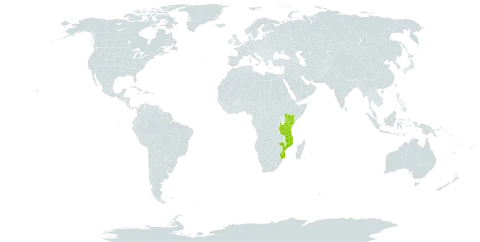Almost identical with the last, save for the velvety pubescence on the stems, undersides of the leaf-blades, inflorescence-axes, calyx, etc. and sometimes few to many additional glandular hairs.. The leaf-blades can be rather larger, up to 18 cm. long, 8 cm. wide, sometimes acuminate at the apex, subcordate or cordate at the base but mostly cuneate to rounded.. The inflorescences are also often rather more extensive with secondary peduncles up to 8 cm.
Flowers arranged in panicles 7–13 cm. long, lax, bracteate, terminal, with indumentum similar to the branches and petioles; bracts falling; pedicels up to 3 mm. long, joined at the apex.
Corolla 3.5–4.5(5) mm. long, glabrous, whitish; tube 3.0–4.0 mm. long, narrowly campanulate; lobes 1.0–1.4 x 1.2–1.8 mm., much broadly ovate, obtuse to rounded, erect to spreading.
A shrub or sometimes a small tree up to 5(10) m. high; branches pubescent with moderately dense short hairs, sometimes with a few longer glandular hairs.
Fruit c. 5 x 6 mm., a little depressed, usually topped by the persistent style; pyrenes with 6–8 lamellae on the outer surface.
Calyx 3.0–3.5 mm. long, pubescent outside, glandular hairs absent; lobes triangular, acute, as long as the tube.
Ovary c. 1 mm. long, conical; style 1.5–2.5 mm. long, very shortly bifid, included; stigmas large, ± peltate.
Stamens inserted about the middle of the corolla tube, included; anthers 0.8–1.2 mm. long, subsessile.

